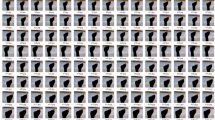Abstract
In recent years, several technologies have been utilized to bridge the communication gap between persons who have hearing or speaking impairments and those who don't. This paper presents the development of a novel sign language recognition system which translates Ethiopian sign language (ETHSL) to Amharic alphabets using computer vision technology and Deep Convolutional Neural Network (CNN). The system accepts sign language images as input and gives Amharic text as the desired output. The proposed system comprises of three main stages which are: preprocessing, feature extraction, and recognition. The methodology employed involves data acquisition, preprocessing the acquired data, background normalization, image resizing, region of interest (ROI) identification, noise removal, brightness adjustment, and feature extraction, while Deep Convolutional Neural Network (CNN) was used for end-to-end classification. The data used in this study was acquired from students with hearing impairments at the Debre Markos Teaching College with an iPhone 6s phone which has a resolution of 3024 × 4020. The images are in JPEG file format and were collected in a controlled environment. The proposed system was implemented using Kera’s (Tensorflow2.3.0 as backend) in python and tested using the image dataset collected from Debre Markos Teaching College graduating students of 2012. The results show that the running time was minimized by adjusting the images to a suitable size and color. In addition, the results show an improved recognition accuracy compared to previous works. The proposed model achieves 98.5% training, 95.59% validation, and 98.3% testing accuracy of recognition.










Similar content being viewed by others
Data availability
Not applicable.
Code availability
Not applicable.
References
Tamiru NK, Tekeba M, Salau AO (2021) Recognition of Amharic sign language with Amharic alphabet signs using ANN and SVM. Vis Comput 0123456789. https://doi.org/10.1007/s00371-021-02099-1
Bantupalli K (2018) American sign language recognition using deep learning and computer vision. IEEE Int Conf Big Data (Big Data), 4896–4899. https://doi.org/10.1109/BigData.2018.8622141
Singha J, Das K (2013) Recognition of Indian sign language in live video. Int J Comput Appl 70(19):17–22. https://doi.org/10.5120/12174-7306
Rivera-Acosta M, Ortega-Cisneros S, Rivera J, Sandoval-Ibarra F (2017) American sign language alphabet recognition using a neuromorphic sensor and an artificial neural network. Sensors 17(10). https://doi.org/10.3390/s17102176
Patel R (2018) A review on image based indian sign language recognition. Int J Innov Res Comput Commun Eng, 9101–9107. https://doi.org/10.15680/IJIRCCE.2018
Truong VNT, Yang CK, Tran QV (2016) A translator for american sign language to text and speech. 2016 IEEE 5th Glob. Conf Consum Electron. https://doi.org/10.1109/GCCE.2016.7800427
Taskiran M, Killioglu M, Kahraman N (2018) A real-time system for recognition of american sign language by using deep learning. 41st Int Conf Telecommun Signal Process, 1–5. https://doi.org/10.1109/TSP.2018.8441304
Ravikiran J, Mahesh K, Mahishi S, Dheeraj R, Sudheender S, Pujari NV (2010) Automatic recognition of sign language images. Lect Notes Electr Eng 52 LNEE:321–332. https://doi.org/10.1007/978-90-481-3517-2-25
Rao GA, Syamala K, Kishore PVV, Sastry ASCS (2018) Deep convolutional neural networks for sign language recognition. Conference on Signal Processing and Communication Engineering Systems (SPACES), 194–197. https://doi.org/10.1109/SPACES.2018.8316344
Wadhawan A, Kumar P (2020) Deep learning-based sign language recognition system for static signs. Neural Comput Appl: 0123456789. https://doi.org/10.1007/s00521-019-04691-y
Tesfaye M (2010) Machine translation approach to translate amharic text to ethiopian sign language. St. Mary’s University College, pp 252–273
Gimibi T (2014) Recognition of isolated signs in Ethiopian sign language Tefera Gimbi Recognition of isolated signs in Ethiopian sign language. Addis Ababa University, p 174
Admasu YF, Raimond K (2010) Ethiopian sign language recognition using artificial neural network. Proc 2010 10th Int Conf Intell Syst Des Appl, 995–1000. https://doi.org/10.1109/ISDA.2010.5687057
Tamiru NK (2018) Amharic Sign language recognition based on amharic alphabet signs. Addis Ababa University, p 201
Zerubabel L (2008) Ethiopian finger spelling classification: a study to automate ethiopian sign language. Addis Ababa University, p 203
Salau AO, Jain S (2019) Feature extraction: a survey of the types, techniques, and applications. 5th IEEE International Conference on Signal Processing and Communication (ICSC), Noida, India, 158–164. https://doi.org/10.1109/ICSC45622.2019.8938371
Author information
Authors and Affiliations
Corresponding author
Ethics declarations
Conflicts of interest/Competing interests
The authors declare that they have no conflict of interest.
Additional information
Publisher’s Note
Springer Nature remains neutral with regard to jurisdictional claims in published maps and institutional affiliations.
Rights and permissions
About this article
Cite this article
Abeje, B.T., Salau, A.O., Mengistu, A.D. et al. Ethiopian sign language recognition using deep convolutional neural network. Multimed Tools Appl 81, 29027–29043 (2022). https://doi.org/10.1007/s11042-022-12768-5
Received:
Revised:
Accepted:
Published:
Issue Date:
DOI: https://doi.org/10.1007/s11042-022-12768-5




